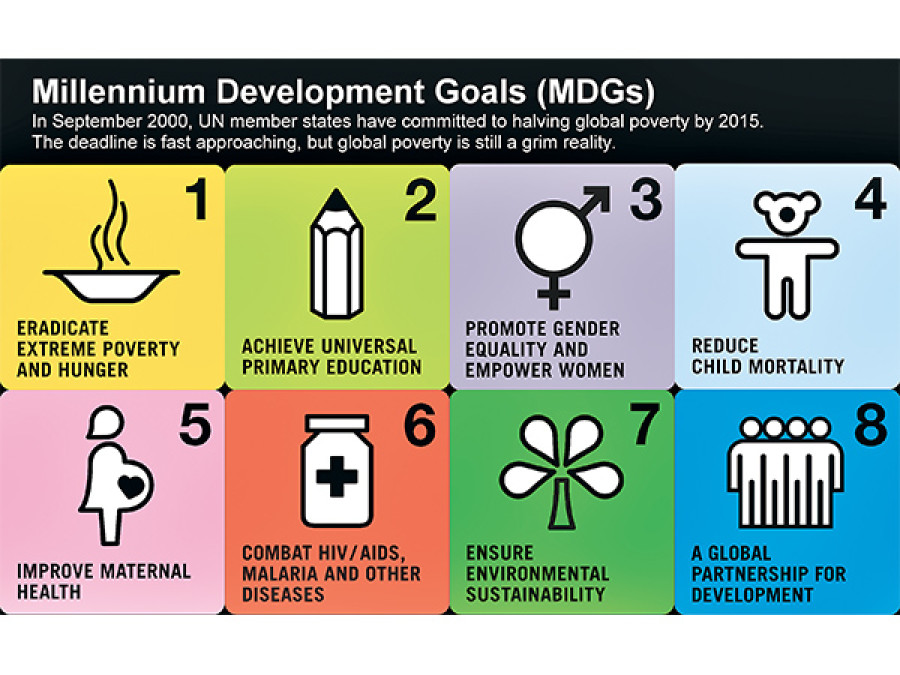Miscellaneous
Still far off target
Nepal struggles to meet the target of ensuring environment sustainability that focuses on sustainable development, ensuring access to energy and protecting biodiversity
Development Bureau
With less than a year remaining of the deadline, Nepal is struggling to achieve the target of ensuring environment sustainability which focuses on sustainable development, ensuring access to energy and reversing the loss of environmental resources and biodiversity, among others.
“Though some efforts have been made towards ensuring environmental sustainability that encourages control in loss of biodiversity and forest along with providing access to renewable energy sources, it has been largely inadequate when it comes to the improvement of socio-economic condition of people living in various parts of the country,” said Govind Raj Pokharel, vice chairperson of the National Planning Commission (NPC).
Similarly, the UN’s MDGs target is to provide basic sanitation and drinking water to 53 and 73 percent of the population by 2015. Though the government data mentions that Nepal has already surpassed the MDG target of basic sanitation (85 percent of the population have access to toilets), the access to improved drinking water is still at around 50 percent mark.
According to Awadh Kishor Mishra, a former official who worked in sanitation and drinking water sector, the major constraint is the difficulty getting the people to realise the importance of sanitation. “It took more than two decades to gain some progress in national sanitation coverage from 6 percent in 1990 to 70 percent in 2014,” Mishra said.
Poor sanitation and unsafe water cause diseases like diarrhoea, which is responsible for the death of around 8,000 children below five each year.
During the 1990s, the forests in Nepal suffered a big loss. Vast swathes of forest areas were stripped in the absence of monitoring due to political instability and conflict in the country. Rampant deforestation, forest degradation and encroachment in various districts also contributed in loss of biodiversity.
The current government estimates show that 39.6 percent of the country’s area is covered by forests. To improve this number, Krishna Acharya, joint secretary at the Ministry of Forests and Soil Conservation, said the government has been taking necessary steps.
Nepal has launched the ambitious plan to graduate from a least developed to a developing country by 2022. To realise this goal, access to energy is seen as the prime indicator to help the country progress and achieve the target on socio-economic development.
However, slow-paced development of energy sector, including the hydropower, has stood as a major obstacle. For Nepal to graduate to a developing country, it has to improve the socio-economic condition of millions of people who are still living under the poverty line.
Development of renewable energy sources such as solar, micro and mini hydro projects and bio-gas is one way to improve the access of energy in the country, Pokharel said.
With more than 80 percent population still dependent on traditional energy sources (firewood alone contributes to 64 percent of the total energy share), it is
impossible to achieve sustainable energy target.




 5.27°C Kathmandu
5.27°C Kathmandu









